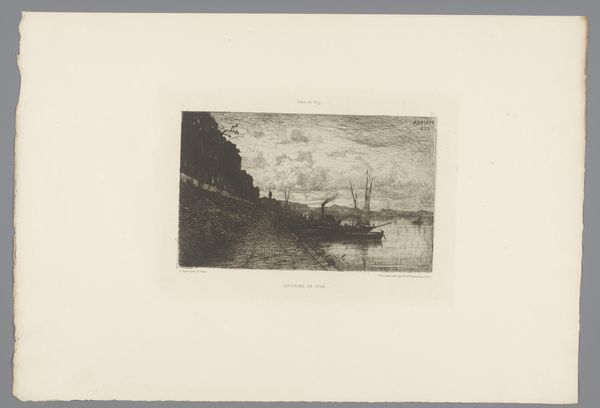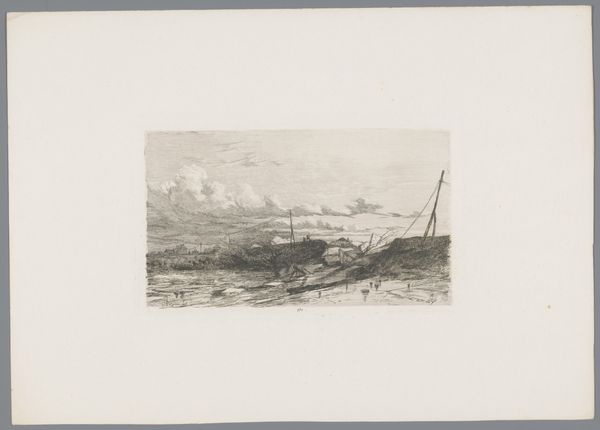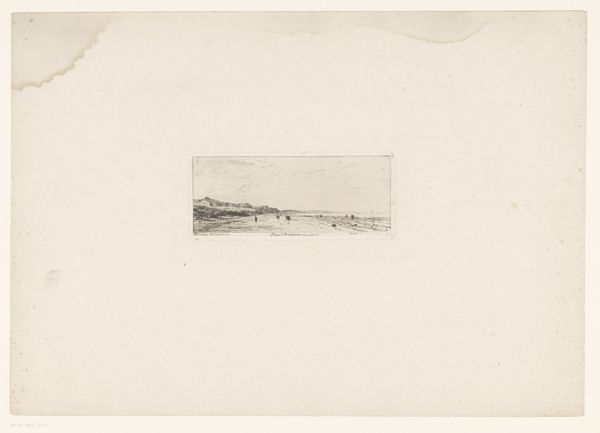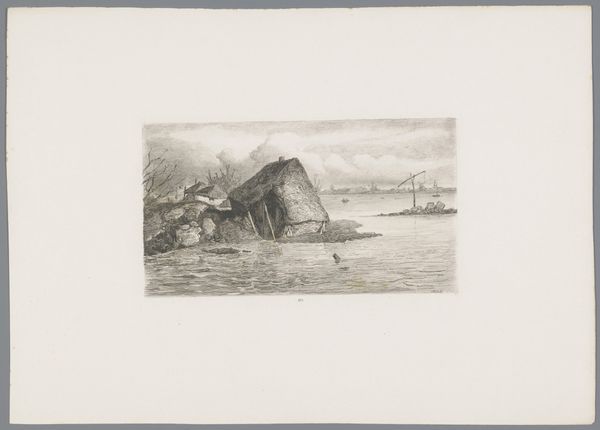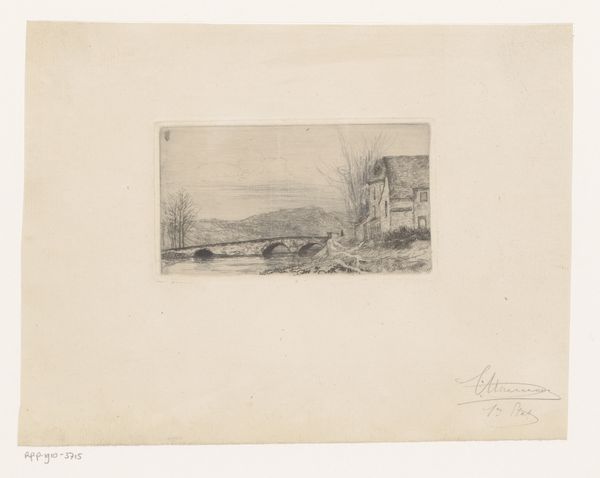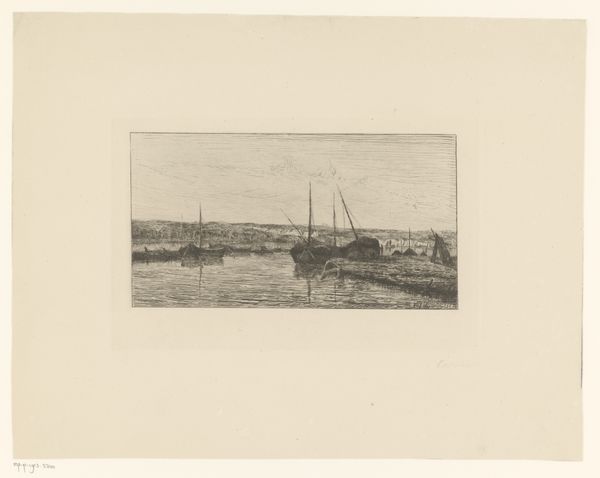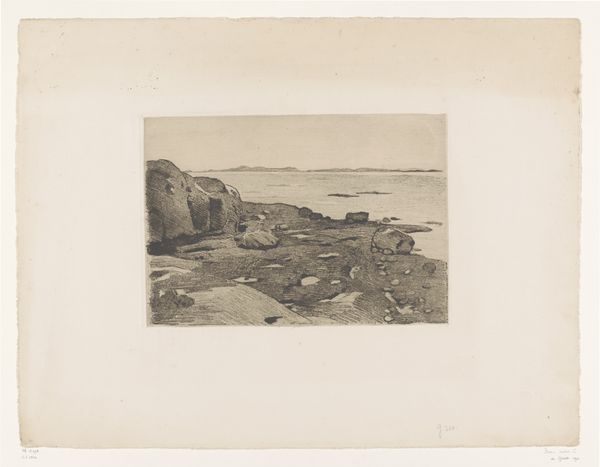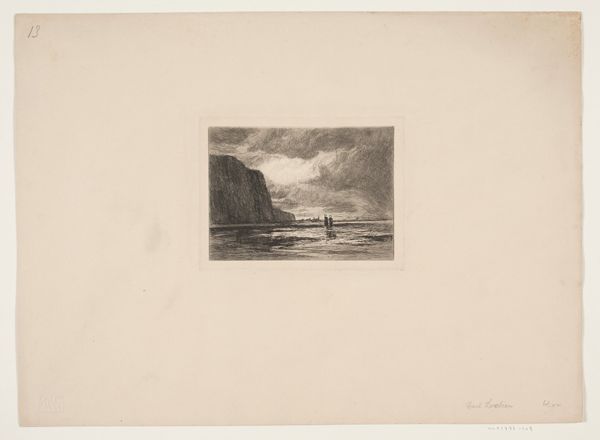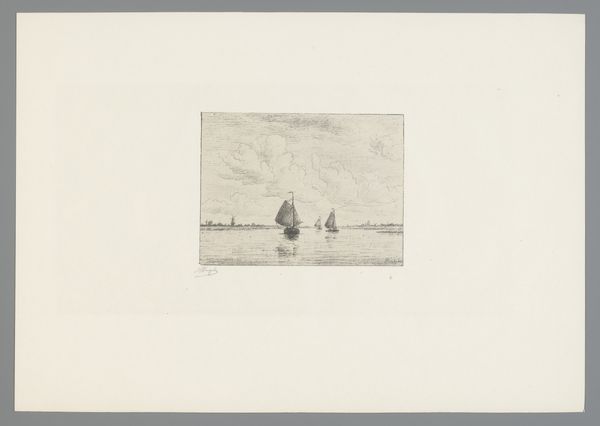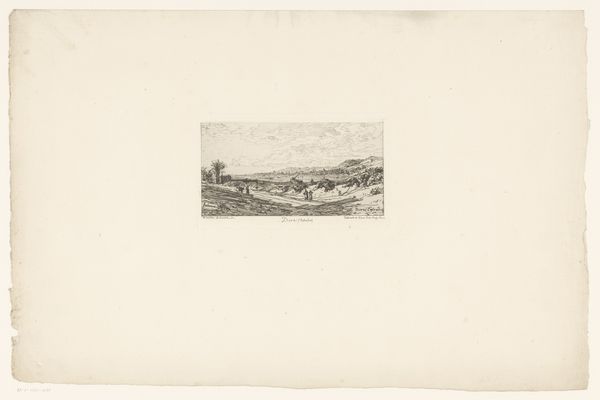
print, etching
# print
#
etching
#
landscape
#
realism
Dimensions: height 127 mm, width 250 mm
Copyright: Rijks Museum: Open Domain
Editor: This is John Postle Heseltine’s "Coastal Landscape with Ships," an etching from 1880. It's quite small, and at first glance, I'm struck by the stark contrast between the detailed foreground and the softer, almost hazy, background. What jumps out at you? Curator: I notice first the evidence of labor. Look at the meticulous etching technique; consider how it evokes the manual processes of fishing and boat maintenance implied in the foreground. These raw materials and tools – the planks, the nets – are they idealized or depicted realistically? What is the artist saying about the dignity of work through the materials represented? Editor: That’s a good point. The materials do feel very real, almost worn. I hadn’t thought about that connection. Does the style—Realism— factor into that? Curator: Absolutely. Realism rejects idealized depictions. It focuses on the everyday experiences, and often, the working class. What are the social implications of depicting this scene using the reproducible medium of print? Editor: That's fascinating. By using printmaking, is he democratizing the image? Making it accessible to a broader audience who might identify with the labor depicted? Curator: Precisely! Think about who would have been buying and collecting art in 1880. And what message does it send when an artwork spotlights the labor inherent to landscape instead of erasing it? Consider the raw materials: the metal plate, the acid, the paper; these also come at a cost both environmentally and labor wise. Where do those origins and implications fit into Heseltine's statement here? Editor: I guess it shifts the way I see landscapes in general. Not just pretty scenes, but products of labor and resources. It makes you think about who *doesn't* get represented. Thank you! Curator: And thank you. It's by examining those layers of material, production, and context that we can uncover a richer understanding of even seemingly simple landscape images.
Comments
No comments
Be the first to comment and join the conversation on the ultimate creative platform.
